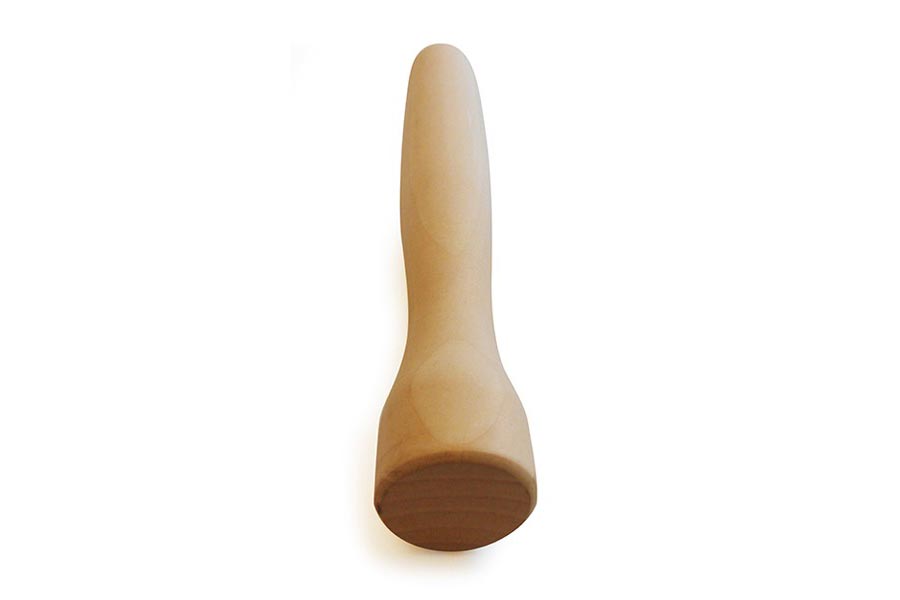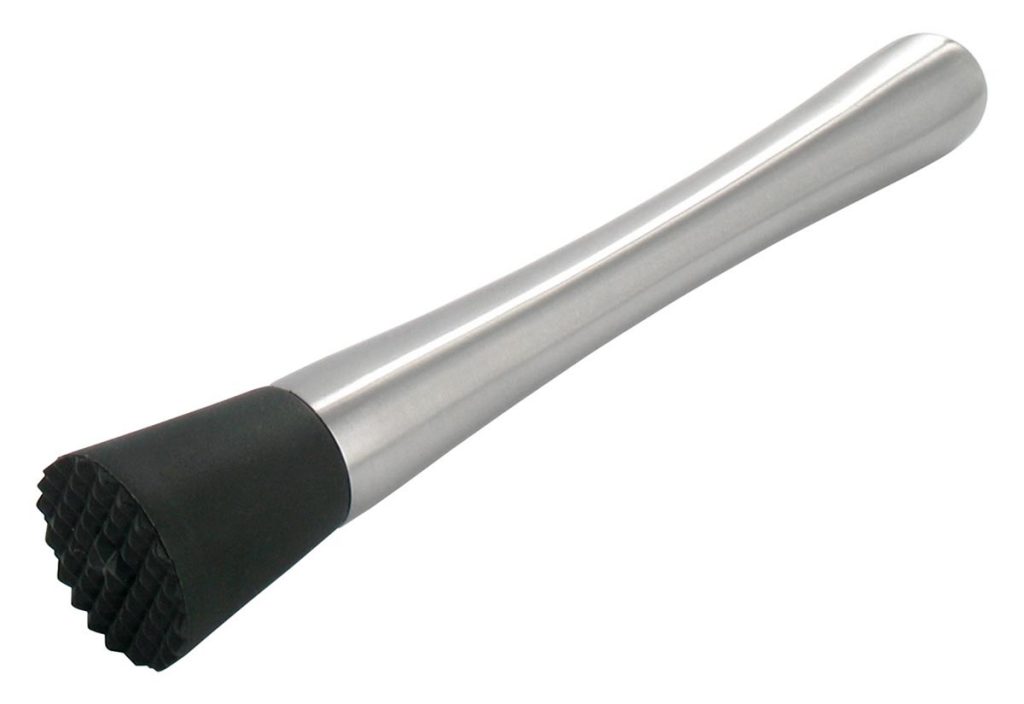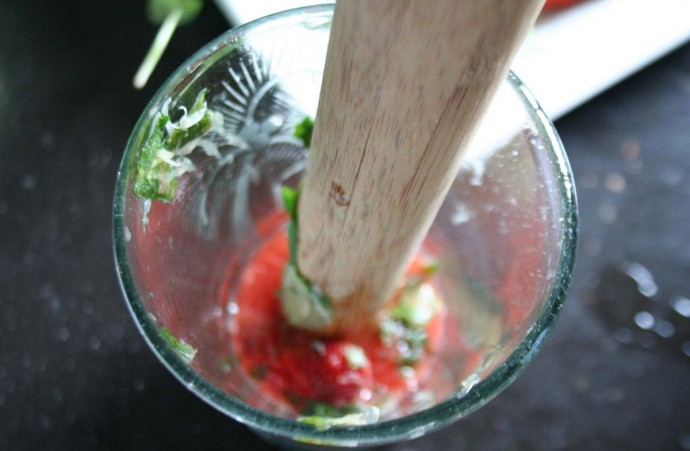When warm weather comes around (or, really, any time of year that you want to serve up something delicious), cocktail drinkers start to get a hankerin’ for drinks made with hand-picked fruit from the farmers market, fresh herbs straight out of the garden, and all kinds of tinctures made from berries and other seasonal favorites. Nothing says summer quite like a nice, refreshing tipple on the porch.
In order to put those ingredients to use in a Mint Julep, Mojito, or Strawberry Daiquiri (and really more delicious drinks than we can count), you’re going to need a muddler. Lucky for you, this is one of the simplest bar tools you’ll need, and one of the easiest to improvise.
Why do I need a muddler?
Well, as we said, muddling is the key to getting the most out of your fresh ingredients. At its core, it’s really just the process of smushing herbs and fruit at the bottom of a glass, and it’s a necessary step in all kinds of cocktail recipes.
What you’re trying to accomplish with cocktail muddlers depends entirely on the type of ingredient itself. Sometimes, with delicate herbs like mint, all you need to do is press lightly on the leaves to express their essential oils. If you muddle the leaves too hard, the cell walls break down and release chlorophyll, which tastes nasty and bitter and can ruin a drink.
Other times, such as when you’re dealing with fruit, you want to smash the hell out of them. Citrus and berries do best when you press out as much of their juice and oils as possible (which seems obvious, but you’d be amazed how many people give their limes a single, wimpy little pat in the bottom of their Caipirinha), so you can afford to be a little more aggressive.
A number of classic cocktails that don’t involve fruit or herbs also call for muddlers. To make an Old-Fashioned, for example, you start by adding a couple dashes of Angostura bitters to a sugar cube (or a barspoon of simple syrup) in the bottom of your glass. After letting it soak in for a bit, you add a drop or two of warm water and use a muddler to crush the cube and dissolve the sugar.
Citrus peels are also frequently muddled, though in much the same way as mint or other herbs—it’s not a necessary step in most recipes, but some bartenders choose to do this at the bottom of their Old-Fashioneds or Negronis. It’s a bit more efficient at expressing the essential oils than simply squeezing the twist over the top of the drink, but the downside is that they get stuck below the surface and aren’t as effectively aromatic.
Which muddler do I get?
While muddlers are pretty basic and generally inexpensive tools, picking the right style is still important. Looking around online, you’ll probably encounter the two most common varieties: blunt muddlers and toothed muddlers.

A blunt wooden muddler | Photo: Cocktail Kingdom
The names are pretty self-explanatory. One is a wooden or plastic dowel with a flat, smooth end, and the other is a wooden or plastic dowel with a rough, jagged end.
If you’re just buying one, we recommend the blunt kind. It’s more versatile, as it’s gentle enough to press herbs without tearing them, but can also be used to effectively press fruits and berries. The toothed muddlers are a bit too… violent, in our experience, and are really only useful when it comes to smashing the hell out of blueberries or citrus.
We also recommend sticking with unvarnished wood, as it’s a lot less likely to contaminate your cocktails with any off tastes.

A popular metal-and-plastic muddler with teeth | Photo: Things for Drinks
Here are a couple of good choices, one of each variety:
- Natural Wood Muddler ($11) – As usual, Cocktail Kingdom comes through with a sturdy workhorse of a product fit for rigorous use. This blunt muddler is as straightforward as they come, and is untreated and unvarnished so you don’t have to worry about weird flavors leeching into your drink.
- Decodyne Steel and Nylon Muddler ($6-16) – This is probably the most popular toothed muddler available online, and is made with a stainless steel handle and nylon head. Because it’s a toothed muddler, we don’t recommend it if you’re only getting one—but if you already have a blunt muddler, this is a good one to round out your collection.
What if I can’t afford a muddler?
This is one of the few items where we can wholeheartedly recommend passing on a purchase. Because muddlers are so basic, it’s extremely easy to find a substitute lying around your kitchen.
Really, all you need to improvise a muddler is something that’s good at pressing and smashing food, and a wooden meat pounder or thick wooden spoon makes for a totally acceptable substitute.
In case you need some reassurance, we bartended for years before ever buying a muddler to use at home—it’s simply not that important when it’s so easy to get the job done without spending money.
Feature Photo: Hungry Again




I love the idea of exploring muddlers and fresh, fruity drinks after a visit to the farmers market. The concept of using a muddler to extract flavors from ingredients like strawberries is intriguing. It’s amazing how a simple tool can elevate the taste of cocktails. I’m curious about the types of muddlers recommended in the article – wood, metal, or plastic? Each material might impact the drink differently. Also, experimenting with various fruits for muddling sounds like a fun way to create unique beverages. This article has definitely sparked my interest in mixology Snow Rider 3D techniques!